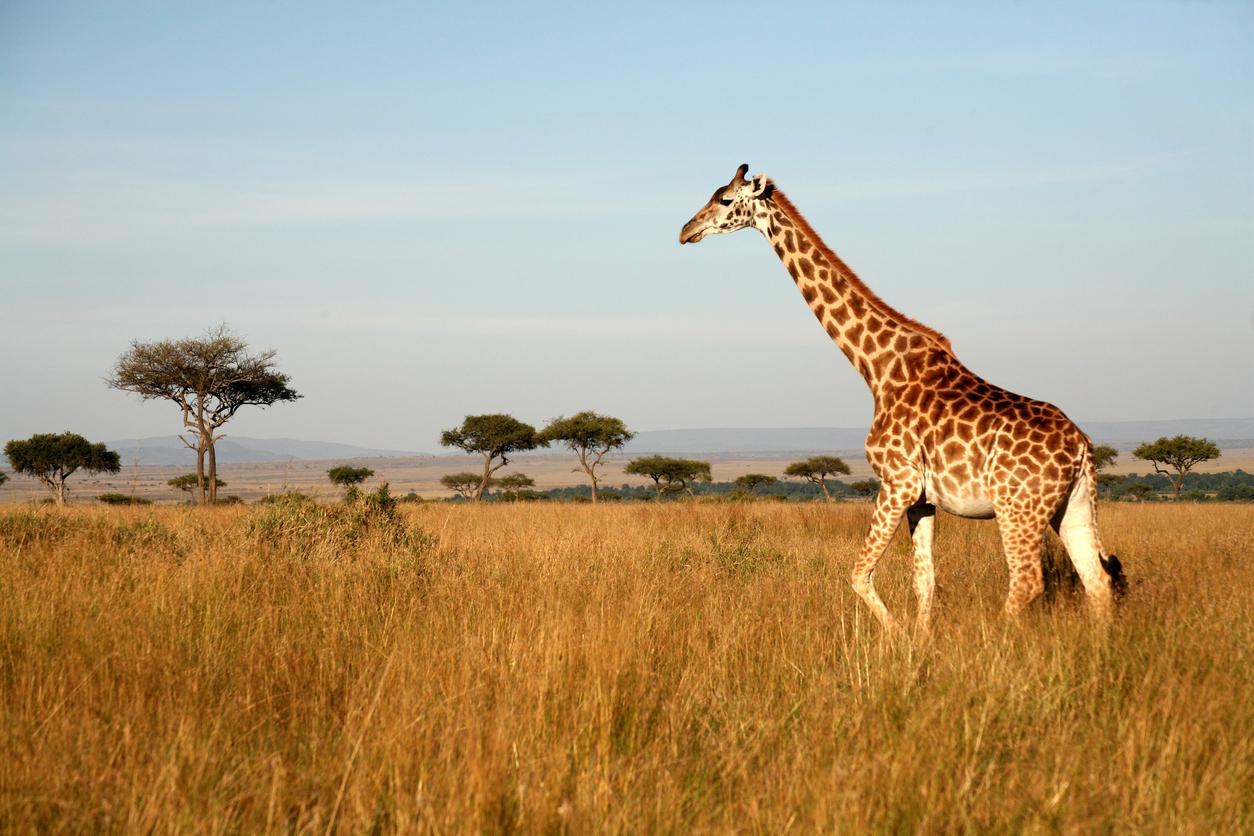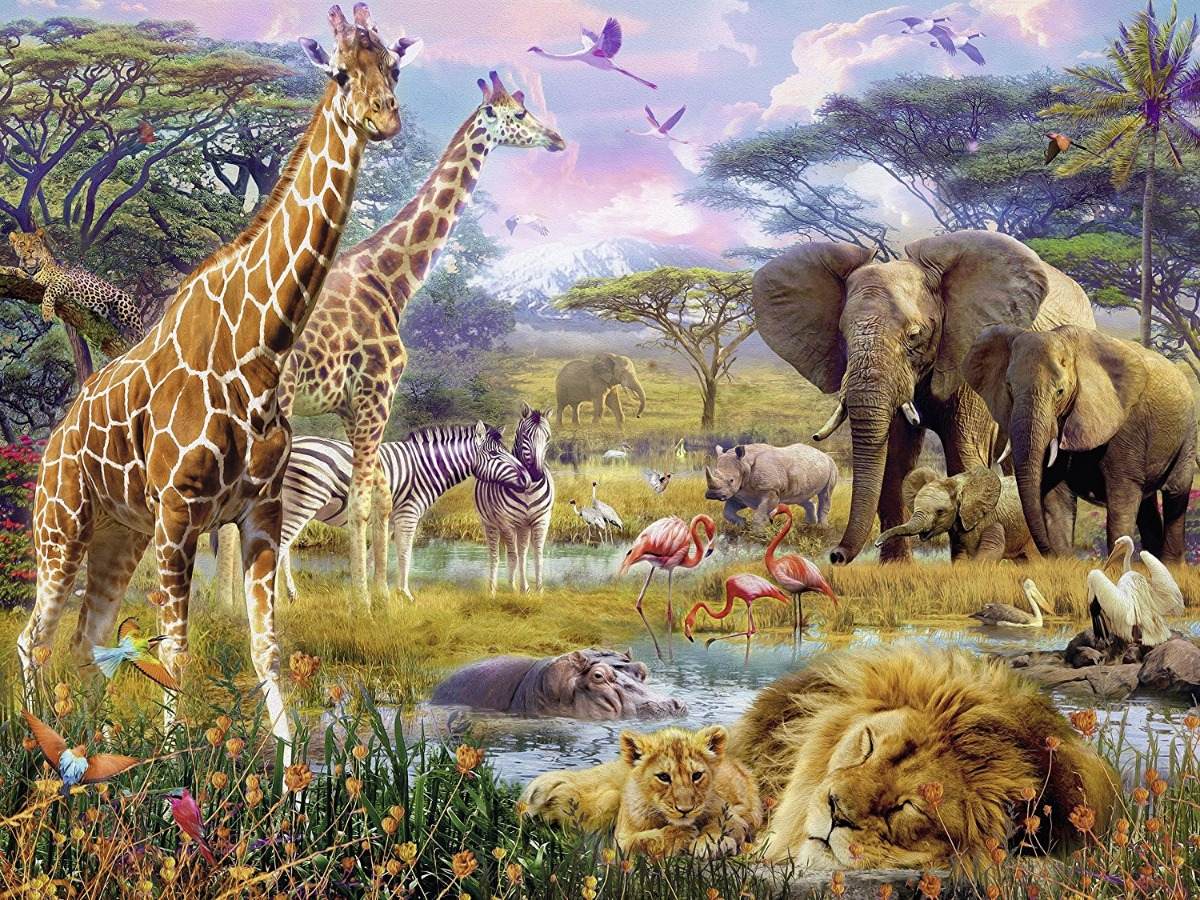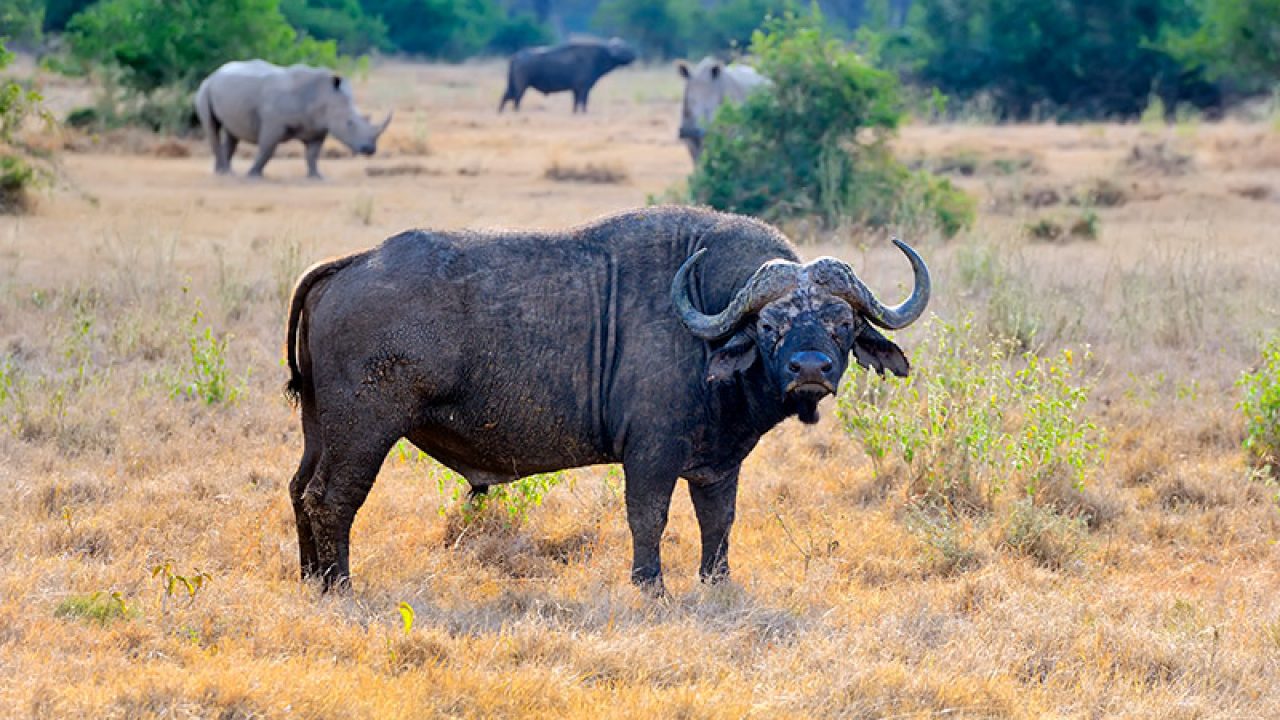It is likely that if you were asked about the savannah animals, the first thing that would come to your mind would be the animals that we associate with Africa, for having the most extensive savannahs that exist, but they also have the most striking, ferocious and beautiful animals. Do you want to know more?

What animals live in the African savannah?
The animals that live in the savannah environment have been depicted in many movies, documentaries, and cartoons. Disney has probably been one of the companies that has earned the most money with the representations of these animals, with films like Dumbo or the Lion King or the Jungle Book, creating characters as recognized as Pumbaa, Rafiki, Timón or Balú.
But in addition to baboons, elephants, lions, wild boars, tigers and meerkats, many animal species live in the savannah, and in this post we are going to take a look at the most relevant and well-known ones.
the african savannah
The savannah is a biome that is located in the tropical and subtropical zones of the planet, in areas such as the central section of Africa, which is the best known, but also in Asia, Australia and South America. Normally these are transition areas between jungles and semi-deserts.
Its peculiarity is that herbaceous vegetation predominates and it has a tree-shrub substrate in which the tree areas have very little extension, either because the trees are small or because they are going to be found in a very scattered way, which makes it easier for the herbaceous substrate has much larger extensions and has a higher height.
Another characteristic that these biomes have is that they only have two seasons, the dry season alternating with the wet season, although they are mostly environments that have a dry tropical climate.
Types of animals of the African savannah
There is a huge variety animals that live in africa and that they change depending on the area in which the biome they inhabit is. If we take for example the African savannah, on which we will pay special attention in this post, which in addition to the fact that people have greater knowledge, we must say that it is a habitat that contains a wide variety of animal species. But first, we will make a preliminary classification of the savannah animals African according to their way of feeding, and in this sense we have the following:
Herbivores of the African savannah
Many of the living beings that inhabit the African savannah are herbivores and some of them are enormous in size, which is possible due to the large number of herbaceous substrates that can be found in the savannah and also due to the adaptation that These animals have managed to take their nutrients from very varied plants. A particularity that is observed in this class of animals is that they carry out large migrations during the dry season.
Another particularity that can be observed in these animals is that their offspring are normally very precocious and manage to develop very quickly, for example, they are able to walk almost nothing else at birth. Another feature is that the herd has adapted to protect them from predators.
Some species of herbivorous animals that live in the African savannah are the following:
- Zebras
- Horses
- Wildebeest
- Antelope
- Deer
- Gazelles
- Giraffes
- Rhinos
- Elephants
- buffaloes
- Ostriches
These species have been able to develop a large number of tactics to evade their predators, such as the stupendous speed possessed by gazelles and ostriches, the majestic height of giraffes that makes it easy for them to see predators from distant areas, or the volume and strength of the elephant, which makes possible predators move away from them for fear of their attack.
Predators of the African savannah
A logical consequence of the fact that there is a great variety of species that are herbivorous is that there is also a large number of animals that feed on their meat. Several species of predatory animals coexist in the savannahs of Africa, among which are the following:
- Leones
- Cheetahs
- Leopards
- Hienas
- Perros salvoes
- Black mamba
This last one, the black mamba, is one of the most feared animals of the African savannah, and the reason is very obvious, it is the most poisonous snake on the African continent.
The same thing happens with predators as with herbivorous animals, which have managed to develop tactics to evade them, and carnivores have also been able to adopt some techniques to try to nullify the efforts of herbivorous animals to avoid them.
An example of this is the enormous speed with which a cheetah can run, which is the fastest animal on the planet on land, although it is not possible for them to maintain that speed for long periods of time chasing their prey. Another example is the behavior exhibited by lions and hyenas, carnivorous animals that are at the same time social, which is why they hunt animals in groups that are weaker or that are further away from the herd and from the protection it provides. can provide them.
Mammals of the African savannah
The vast majority of savannah animals affricates that are most recognized are part of the family of mammalian animals. Several of the mammals that inhabit the savannah are the following:
- Primates, such as baboons or baboons.
- Herbivorous ungulates, mentioned above, such as hippos, buffalo, elephants, rhinoceroses, wildebeests, gazelles, giraffes, African moose, impalas, antelopes or zebras.
- Carnivores such as the well-known meerkats, magostas, foxes, jackals, hyenas, cheetahs, leopards or lions.
- Insectivores, which sustain their diet, in particular, by eating termites, such as the aardwolf, the giant armadillo, the anteater or the pig.
Birds of the African savannah
Between the savannah animals It is also possible to get many kinds of birds such as:
- Birds of the group of ratites, of which the ostrich is a part, which is an immense running bird.
- The Sagittarius (Sagittarius serpentarius), which is one of the Birds Raptors that exist but only hunt from the ground.
- The peculiar carrion birds such as the marabou, some kinds of vultures, such as the white-backed vulture or the sooty vulture.
- The mouse birds (Colius striatus).
- The starlings.
- Weaver birds, which build their nests by taking long stems from the herbaceous layer, as occurs with the masked weaver (Ploceus velatus) or the white-headed buffalo weaver (Syncerus caffer), which takes its name from its habit of accompanying and follow the African buffalo when they make their migrations.
- Common quelea (Quela quelea), currently considered a pest for agriculture, whose action is compared to the effects caused by locusts.
Reptiles of the African savannah
There are also several species that represent this family of animals that have cold blood and that live in the Characteristics of an Ecosystem such as that of the African savannah, such as:
- The sulcata tortoise.
https://www.youtube.com/watch?v=vQv7w9wTjSg
- The African crocodile, which although it inhabits the rivers, lakes, ponds and swamps of the jungles of western and central Africa, also has a habit of making inroads in the dry savannahs.
- Snakes like the previously mentioned black mamba.
Insects of the African savannah
Last but not least, we can observe that among the savannah animals insects are found and that they live in a large extension of these areas, in fact, the vast majority of the inhabitants of the savannah are insects, who in the dry season also migrate over enormous distances, feeding on plants of the area.
If we want to make a classification of the insects that inhabit the savannah, in order of importance, we have that among the first we will find termites, grasshoppers and ants. In the case of termites, we can see that sometimes they manage to build their nests or termite mounds at a great height.
But in this class of animals is also found the most harmful mosquito on the planet, because with its bite it manages to transmit diseases and serious ailments, such as yellow fever or malaria. Flies like the tsetse fly also stand out in this group, which is the cause of the death of a large portion of cattle and which transmits Trypanosoma gambiense, which is the cause of sleeping sickness.
Other insects that can be found in the African savannah are crickets, horseflies or beetles, such as the dung beetle.


